Eddie Jones introduces one of his favourite quarry species, the magnificent woodpigeon
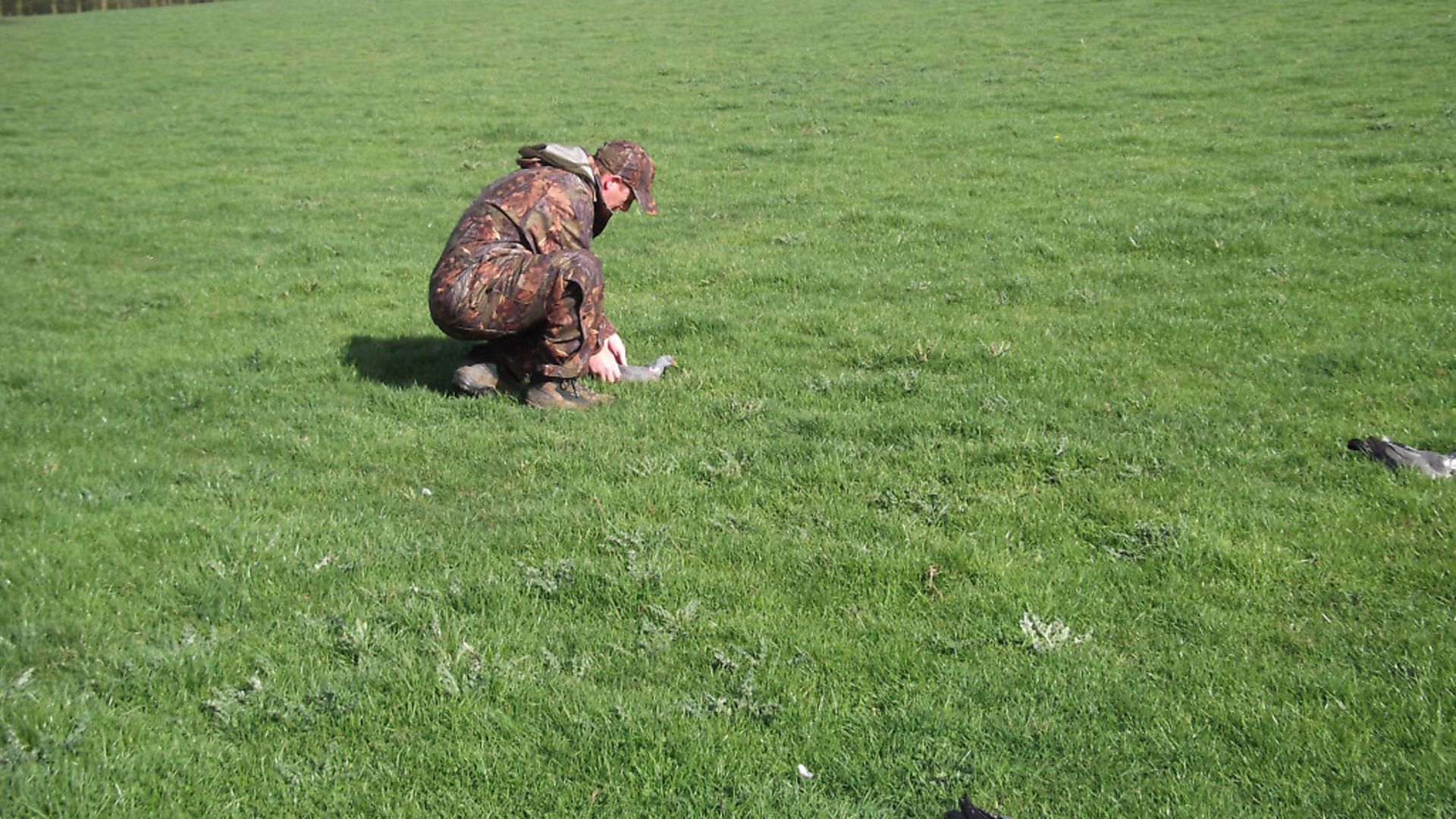 credit: Archant
credit: Archant
Next on my list of pest species that I shoot regularly is the woodpigeon – probably the worst offender of crop damage that any farmer will face. Rabbits can cause extensive damage, without doubt, but when the woodpigeon arrives in its thousands, crops have no chance of avoiding getting stripped to the roots. Although it is mainly winter when we see this kind of gathering, summer can produce high numbers congregating once the young birds start leaving the nests. Although we as airgunners do not get the numbers our shotgun brothers enjoy, we can acheive great figures if we put the work in.
Many times, I have shot over 50 birds in one session and have seen others taking nearly 100; it’s all about homework and patience to build a productive session. When you read this feature, spring will be on our doorstep, and this is one of my favourite times of the year to shoot pigeons. The main crop areas are too high for them to feed on, so they move more to grass fields in search of clover. On many grounds where we shoot, there will always be grass fields, whether for pasture or horse paddocks. So, what is the woodpigeon all about? Let’s take a look at this remarkable bird and get to know him a bit more.
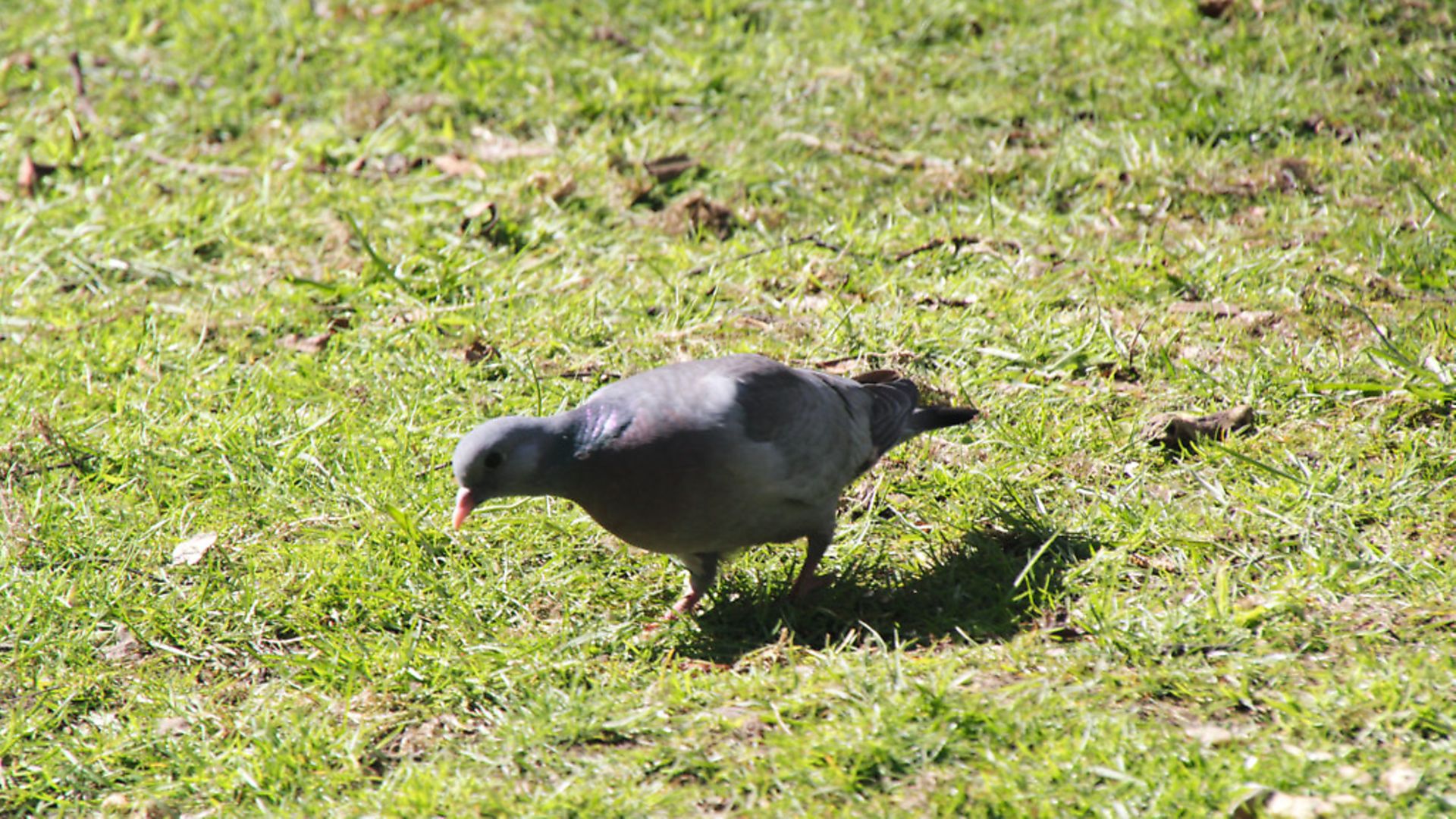 credit: Archant
credit: Archant
A big bird
The woodpigeon is the largest pigeon of all the species found in the UK. They are large, dumpy-looking birds and will parade around fields, generally in pairs. They have increased in numbers over recent years and occur in many habitat types. The woodpigeon is one of the commonest bird throughout the UK. It is dark grey, is much more often seen than the similar-looking stock dove, and shows far whiter in its plumage. Sexes are alike, so when you are trying to be selective in which birds to shoot, it is almost impossible. The pigeon’s upper parts consist of a dark grey tail with a broad, black terminal band which has a paler upper edge and its back and mantle are all dark blue-grey.
Its head is also blue-grey and shows a large white neck patch with an iridescent greenish patch above. The eye is white and the bill pale orange with a red base and small white shield. The folded wing is blue grey with black primary feathers that have paler edges. The wing also shows a white shoulder, which, in flight, shows as a broad white bar across the wing. The breast is grey with a salmon pink wash and its belly colour is a pale grey.
In flight, the bird appears fairly uniform grey from below, so look for the white upper wing band, white neck patch, dark primaries and dark tail band as the pigeon comes into land, just to make sure that you are shooting the correct species.
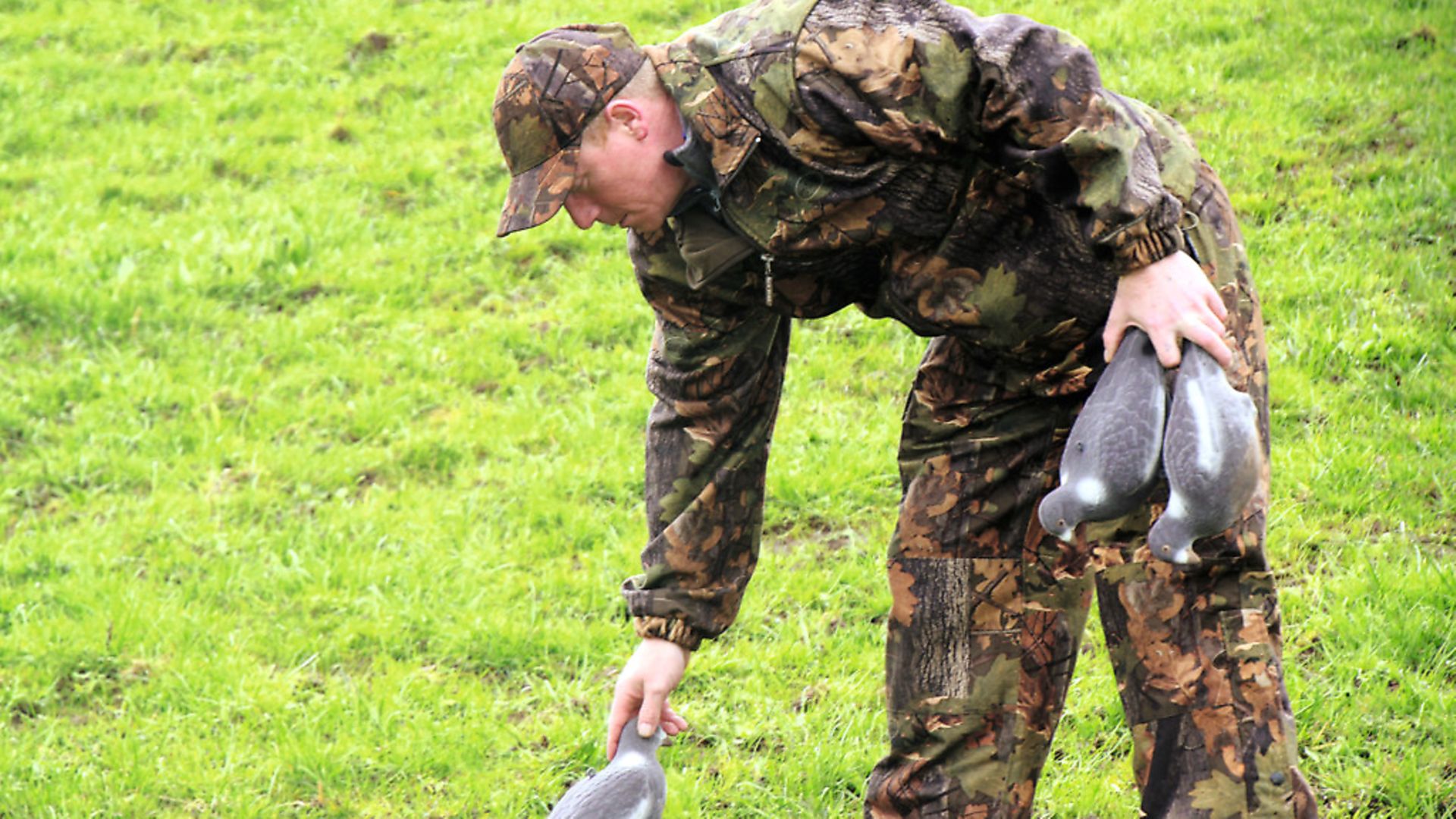 credit: Archant
credit: Archant
As stated above, they look pretty similar to our smaller stock dove, and I would be lying if I said that I have never nearly shot one of those. When up in a canopy, it is so easy to be complacent and think it is a woodpigeon, so please make sure you are shooting a woodpigeon before pulling the trigger. Stock doves are protected, so beware of a hefty fine or prison if you do get caught shooting one.
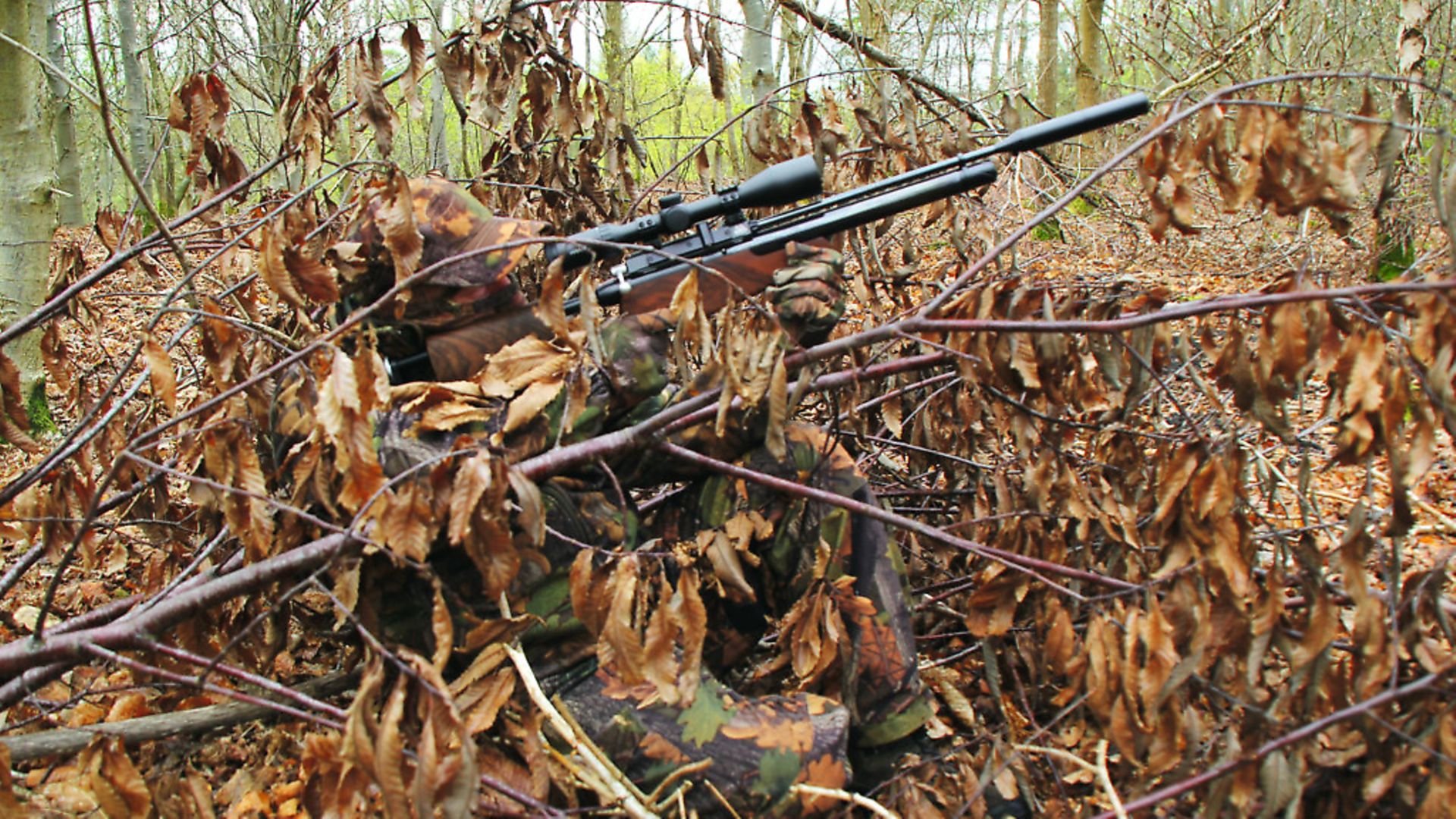 credit: Archant
credit: Archant
They’re everywhere
Woodpigeons occur in all habitat types throughout the UK woodlands, parks, gardens, farmland, hedgerows, towns and cities. In the garden, woodpigeons will take any type of food from the ground and will happily use bird tables with seed on. In farmland habitat it will be seen feeding on clover, young shoots, wheat, barley and peas or beans. In the winter, rape and berries are the staple diet, including ivy and hawthorn. There are an estimated three million breeding pairs in the UK. Couple this to the birds we get from the Continent in winter, and it makes from some great pest-control opportunities. The female will nearly always lay two white eggs on a nest made of twigs. It amazes me how the eggs stay on some of the nests they make, but they do, and unless magpies or other predators get them, both the young will usually fledge after around 29 days.
So, let’s kick off with how I go about controlling pigeons with the air rifle in the spring. As stated above, we should start to see more pigeons feeding on clover, and your best place to look is on horse paddocks for the groups of pigeons. On pasture fields, you will also start to see little groups feeding together. There are two ways to approach shooting these pigeons; my first method, and probably my favourite, would be to set up a little hide under a hedge line. I try to get low to the ground and shoot off a bipod so that I am nearly on the same level as the pigeon, and I don’t have to worry too much about hold-over or hold-under at the ranges I am shooting.
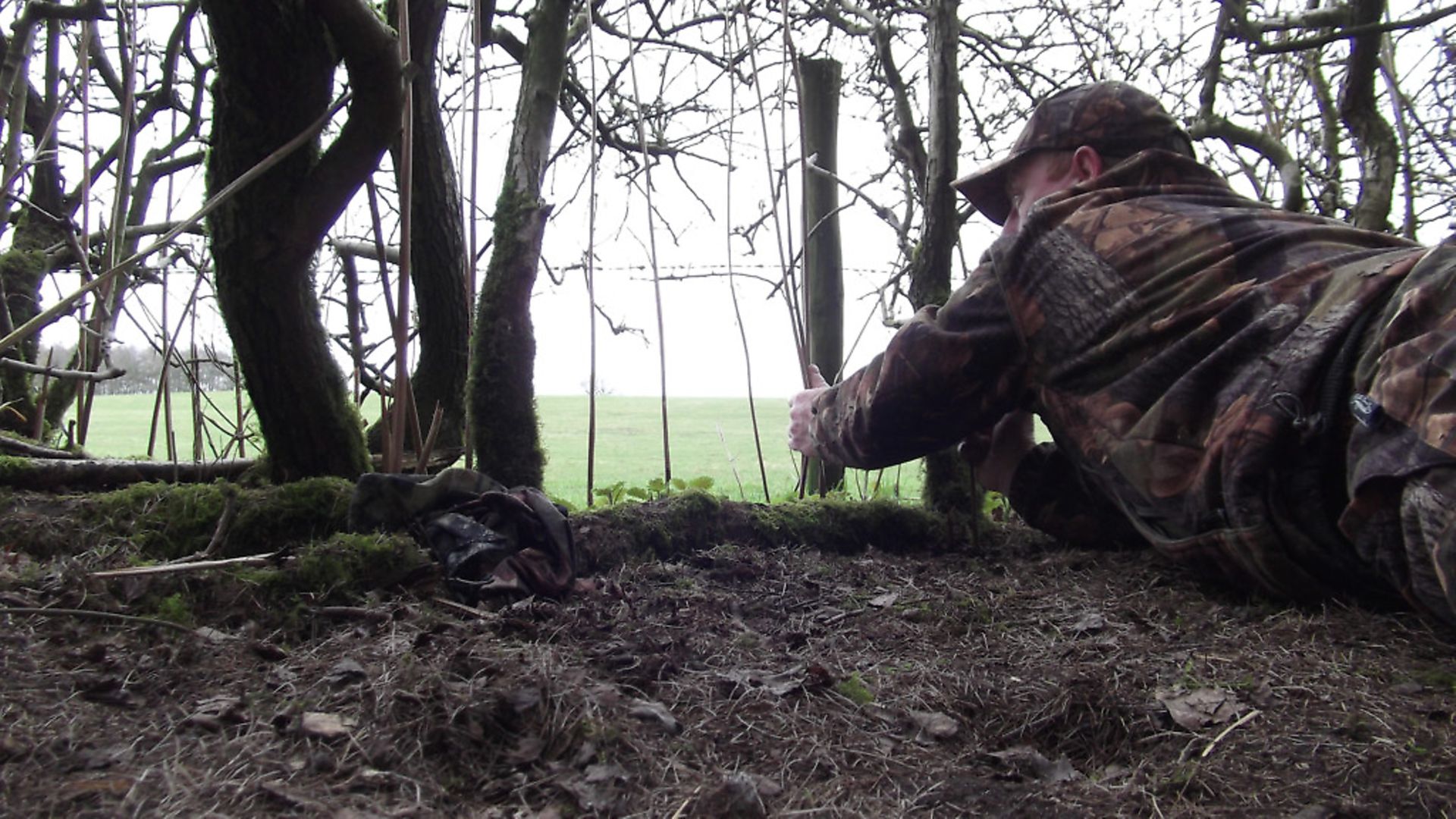 credit: Archant
credit: Archant
On approach
I will always try to set up where I can get some view of any pigeons coming in, too. Pigeons have remarkable eyesight so the slightest movement will give the game away, and I try to be ready behind the scope before the pigeon lands so that the only slight movement will be lining the cross hairs on the pigeon’s head. I usually set a few decoys 30 yards out in the field, three or five is usually more than enough and full-body decoys, if possible. I think pigeons settle better with full body as opposed to the shell decoys. It is not uncommon to see a cock bird try to mount a decoy in early spring, when they are full of testosterone. When I have shot a couple of pigeons I will swap those for the decoys to give the pigeons a more realistic bird – pigeons see ultraviolet light and if you can use real pigeons for decoys they will be seen from a lot further away than plastic ones.
If you have a breeze coming from the left or right, you need to face them slightly into the wind. Pigeons do not like the wind ruffling their feathers up and will almost certainly feed into the wind. You will also know roughly the direction they will come from, into the pattern, because they like to fly into the wind to land. This gives you the advantage of knowing where to look for them before a shooting opportunity arises. There is no definitive way to set your decoys when using just a few, either – just leave a gap in the middle for one to land because this is usually what happens. Always try to get a head shot on a pigeon; the heart and lungs are hard to get at with all the plumage and crop in the way, and with a head shot you know the pigeon will be dead.
Find a sitty tree
Another way I go about having a few shots is to find a favourite ‘sitty’ tree because some pigeons will always go to the same trees to rest up, either before or after feeding. You can set your hide ready early morning or even late at night, so you don’t have to mess about when you get there. This is a good tactic to use and one that usually gets me a few birds down. You must remember that when shooting them in a tree, you will still need to use hold-under just like you do with squirrels. Another thing is to make sure that you use a camo head net and gloves – all skin needs to be covered or you will be seen in an instant. Next month, we will see how to go about shooting late summer and autumn pigeons to good effect.
__________________________________________________
Hunting: Shooting rabbits at night
The best way of culling grey squirrels
Hunting: A return to ratting